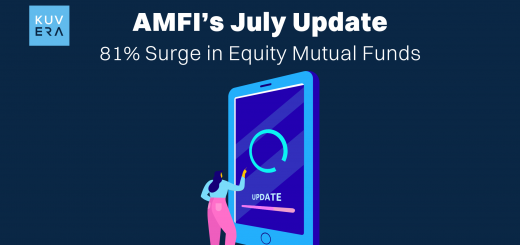Debt mutual funds are simply mutual funds India schemes that invest in debt-related instruments. The underlying asset or security in these mutual funds India schemes predominantly is fixed-income or debt investments.
These mutual funds comprise a pool of government bonds, corporate bonds, corporate debt instruments, and money market instruments.
Debt mutual funds can be less riskier than their equity counterpart as they invest mostly in fixed income securities. These mutual funds India types can help you balance the overall risk of your portfolio by providing steadier returns over different investment tenures. Debt mutual funds, though a broader category, can be sub-divided into various types.
Let us learn more about debt mutual fund categories or debt mutual fund scheme types below:
Types Of Debt Funds
The following are the types of debt funds in India:
1. Overnight Fund
As the name suggests, they are mutual funds that mature overnight. These are open-ended debt schemes and they invest in overnight securities. The investment is in overnight securities having a maturity of 1 day.
2. Liquid Fund
Liquid funds as their name hints are the most liquid mutual funds. They can be redeemed at any point of time. They are mostly used for building a strong emergency corpus, for their ability to be redeemed at any moment like withdrawing money from a savings bank account. These are open-ended mutual fund schemes. Liquid schemes invest into debt and money market market securities with a maturity of up to 91 days only as underlying assets.
3. Ultra-Short Duration Fund
These are open-ended mutual fund schemes. An ultra-short-term debt scheme invests in debt and money market instruments with Macaulay duration of the portfolio between 3 months and 6 months.
4. Low Duration Fund
As per the name, these are low duration maturity debt funds. They are open-ended debt schemes, meaning, they can be redeemed after a lower maturity period duration. They invest in debt and money market instruments with Macaulay duration of the portfolio between 6 months and 12 months.
5. Money Market Fund
These funds invest predominantly in money market instruments. These are open-ended debt schemes investing in money market instruments having maturity up to one year.
6. Short Duration Fund
This is an open-ended short-term debt scheme investing in debt and money market instruments with Macaulay duration of the portfolio between one year and three years.
7. Medium Duration Fund
As the name says, the maturity period of these funds is higher than low duration funds but lower than long duration debt mutual funds India. This is an open-ended medium-term debt scheme investing in debt and money market instruments with Macaulay duration of the portfolio being between three years to four years. Portfolio Macaulay duration under anticipated an adverse situation usually is one year to four years.
8. Medium to Long Duration Fund
A Medium to Long Duration mutual funds scheme is an open-ended medium-term debt scheme investing in debt and money market instruments with Macaulay duration of the portfolio between four years and seven years. Portfolio Macaulay duration under an anticipated adverse situation is one year to seven years.
9. Long Duration Fund
These are debt mutual funds with a longer maturity period. A long duration mutual fund scheme is an open-ended debt scheme investing in debt and money market instruments with Macaulay duration of the portfolio greater than seven years.
10. Dynamic Bond
A dynamic bond debt mutual fund scheme is an open-ended dynamic debt scheme investing across duration.
11. Corporate Bond Fund
These mutual fund scheme types are open-ended debt schemes predominantly investing in AA+ and above rated corporate bonds. The minimum investment in corporate bonds shall be 80 per cent of total assets (only in AA+ and above rated corporate bonds).
12. Credit Risk Fund
There are open-ended debt mutual fund schemes investing in below highest rated corporate bonds. The minimum investment in corporate bonds shall be 65 per cent of total assets (only in AA (excludes AA+ rated corporate bonds) and below rated corporate bonds).
13. Banking and PSU Fund
As its name says, these mutual fund types invest in banking and PSU debt instruments. A Banking and PSU fund scheme is an open-ended debt scheme predominantly investing in debt instruments of banks, Public Sector Undertakings, Public Financial Institutions and Municipal Bonds. The minimum investment in such instruments should be 80 per cent of total assets.
14. Gilt Fund
Gilt mutual fund schemes are open-ended in nature. These are debt schemes investing in government securities across maturity periods. The minimum investment inG-secs is defined to be 80 per cent of total assets (across maturity).
15. Gilt Fund with 10-year constant duration
These are a gilt fund scheme type. This scheme is an open-ended debt scheme investing in government securities having a constant maturity of 10 years. Minimum investment in G-secs is 80 per cent of the total assets such that the Macaulay duration of the portfolio is equal to 10 years.
16. Floater Fund
This is an open-ended debt scheme. Floater funds are schemes predominantly investing in floating rate instruments (including fixed rate instruments converted to floating rate exposures using swaps/derivatives). Minimum investment in floating rate instruments (including fixed rate instruments converted to floating rate exposures using swaps/derivatives)shall be 65 per cent of total assets.
SEBI Guidelines For Debt Mutual Funds India
The Securities Exchange Board of India (SEBI) plays a pivotal role in safeguarding investor interests by establishing exhaustive guidelines for mutual funds, ensuring the integrity and transparency of the securities market. In the realm of mutual funds, SEBI’s regulations provide clear differentiation across various fund categories, including debt mutual funds, which focus exclusively on debt instruments. Originating from SEBI’s 2017 circular on “Categorisation and Rationalisation of Mutual Fund Schemes,” debt mutual funds are further divided into sixteen sub-categories based on maturity periods and risk profiles. These range from overnight and liquid funds with short maturity durations to long-duration and gilt funds, which focus on government securities. This structured classification ensures investors can make informed decisions tailored to their financial goals and risk appetite.
In light of evolving market dynamics, SEBI periodically updates its guidelines to enhance liquidity and reduce concentration risk in debt mutual funds.
The November 2020 amendments introduced a mandatory minimum liquidity holding of 10 per cent in government securities, treasury bills, or cash equivalents, ensuring funds maintain adequate liquidity across categories. This mandate applies universally, except for overnight, liquid, and gilt funds. Additionally, SEBI imposed restrictions in March 2021 on the exposure of mutual funds to securities from a single issuer, capping investments at 10 per cent for bonds across different issuers and limiting single issuer exposure to 5 per cent for certain funds. These regulatory measures collectively aim to mitigate risks, promote diversification, and safeguard investor interests, reinforcing SEBI’s commitment to fostering a resilient and transparent mutual fund ecosystem.
Wrapping Up
There are a variety of debt mutual funds available for various investor types and their financial goals. Investors can choose the fund type based on their financial goals, risk appetite and return expectations.
Interested in how we think about the markets?
Read more: Zen And The Art Of Investing
Watch here: Is UPI Killing the Toffee Business?












